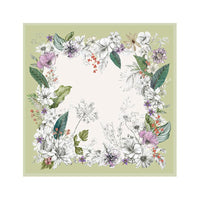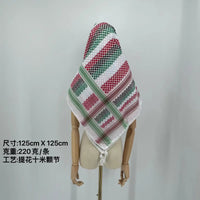The Keffiyeh: A Shorthand for the Palestinian Struggle
The keffiyeh, a garment with deep roots in Palestinian culture, is worn by fellah (rural workers) and Bedouin alike. Its practicality lies in its ability to cover the back of the neck, protecting the wearer from both the summer sun's heat and winter's cold. According to Lingala, "Covering one's head was an essential principle in traditional Palestinian culture." The keffiyeh's folds create air pockets that allow for breathability.
In contrast, the more educated and urban Palestinians, known as effendi, preferred the fez or tarboush—a deep-red felt hat that gained popularity under Ottoman ruler Mahmud II and became a standard form of dress among locals.
Cultural historian Jane Tynan explores the scarf's significance in her book, Fashion and Politics. She notes, "The Ottoman Empire's dress codes aimed to erase ethno-religious identities, yet these norms were widely adopted by urban dwellers."
Following the Turkish empire's loss of its Near Eastern territories during World War I and the Arab Revolt against British colonial rule in 1936, the keffiyeh took on a new meaning. Palestinian nationalists used it to cover their faces, concealing their identities and evading arrest. Despite unsuccessful attempts by the British to ban the headscarves, Palestinians united in adopting the fabric as a symbol of solidarity. This symbol remained a staple of Palestinian nationhood after the Nakba and the establishment of Israel.
Maha Saca, head of the Palestinian Heritage Centre in Bethlehem, explains, "Palestinians of all social classes abandoned the fez and united around wearing the keffiyeh, making it challenging to identify the revolutionaries."
Tynan, an assistant professor in design history and theory at Vrije Universiteit Amsterdam, observes that "from its function in the revolt as a means to disguise the wearer's identity from British authorities, the keffiyeh became shorthand for the Palestinian struggle." Lingala echoes this sentiment, stating, "As Palestinians' collective identity and right to the land were increasingly threatened, they sought to cling to items that represented 'cultural continuity'."

In the 1960s, the late Palestinian leader Yasser Arafat popularized the keffiyeh among a global audience. Saca notes, "Abu Ammar [Arafat] was never seen at any event without it." His keffiyeh was always meticulously positioned, with the longer end of the fabric draped over his right shoulder—some believe it was arranged to resemble a map of pre-1948 Palestine.
When Israeli occupation authorities banned the Palestinian flag from 1967 until the Oslo Accords in 1993, the keffiyeh assumed even greater symbolism. Ted Swedenburg, professor of anthropology at Arkansas University, explains that "portable and visible symbols" were crucial to Palestinians. With the flag banned for nearly 30 years, the keffiyeh, "rich with symbolism and history, served as an everyday, portable, visual expression of Palestinian identity."





